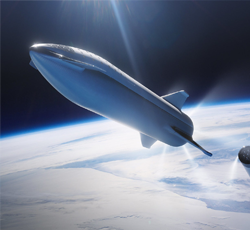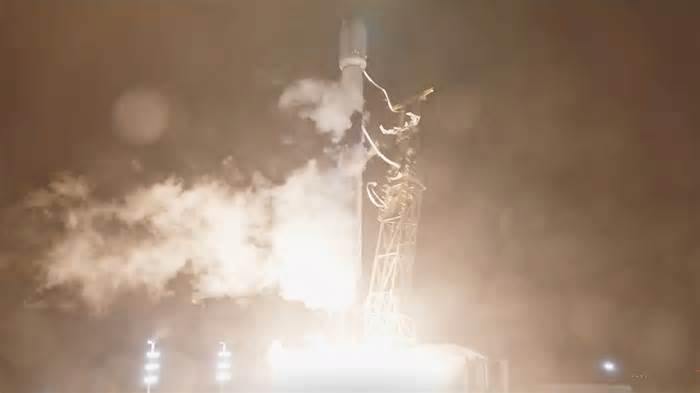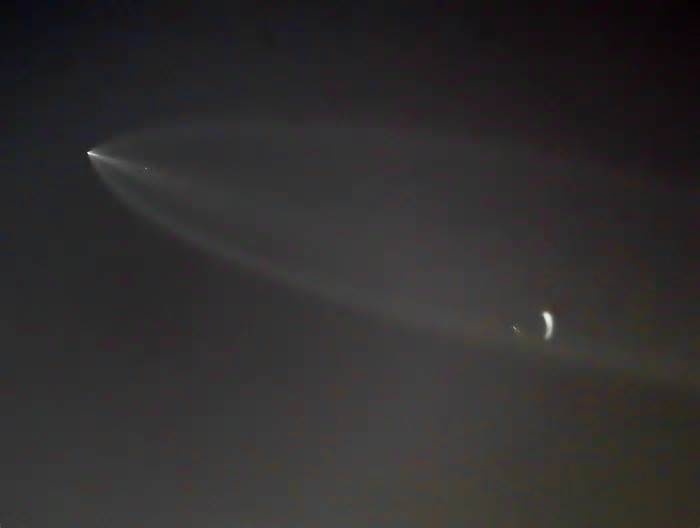
SpaceX to Launch First 1Tbps GEN3 Starlink Broadband Satellites in H1 2026
- by ISPreview UK
- Jul 16, 2025
- 0 Comments
- 0 Likes Flag 0 Of 5

4 Comments
SpaceX’s Starlink service, which offers ultrafast broadband speeds to the UK and globally via a massive constellation of satellites in Low Earth Orbit (LEO), has published a new network update that reveals how the first of their third generation (GEN3) satellites will launch during the first half of 2026. Assuming their Starship rockets stop exploding.
At present Starlink has nearly 8,000 satellites in Low Earth Orbit (c.4,300 are v2 / V2 Mini) – mostly at altitudes of c.500-600km – and they’ll add thousands more by the end of 2027. Residential customers in the UK usually pay from £75 a month, plus
£299
for hardware (currently free for most areas) on the ‘Standard’ unlimited data plan (kit price may vary due to different offers), which promises UK latency times of 28-36ms, downloads of 103-258Mbps and uploads of 15-26Mbps. Cheaper and more restrictive options also exist for roaming users.
NOTE: By the end of 2024 Starlink’s global network had 4.6 million customers (up from 2.3m in 2023) and 87,000 of those were in the UK (up from 42,000 in 2023) – mostly in rural areas. As of July 2025 Starlink has grown to a total of more than 6 million customers.
The company’s latest Network Update reveals how they’ve already launched a total cumulative data capacity of around 450Tbps (Terabits per second) into orbit. SpaceX added that they’re currently also deploying over 5Tbps (5,000Gbps) of extra capacity each week to the constellation with ongoing launches of the current second generation (GEN2) of satellites via their reusable Falcon 9 rockets (in the past year alone they’ve lofted over 2,300 of these).
Advertisement
The current GEN2 satellites have four times the capacity of the original GEN1 versions, but it’s long been known that SpaceX has developed a larger and more sophisticated GEN3 satellite for future launches (summary of GEN3 details). Each one of these new satellites is designed to provide over a Terabit per second of downlink capacity (1,000Gbps+) and over 200Gbps of uplink capacity to customers on the ground.
However, SpaceX can’t currently launch the larger GEN3s properly – in a way that’s commercially viable – because they require the company’s new mega Starship rocket to be ready for prime time (this is expected to be able to loft around 50-60 GEN3s per flight). But in recent months this has had an annoying tendency to explode, perhaps even a bit more often than SpaceX would like.
The good news is that the latest Network Update reveals how SpaceX is finally “targeting to begin launching its third-generation satellites in the first half of 2026“, although this should perhaps be taken with a pinch of salt, particularly given Elon Musk’s tendency for missing targets.
Advertisement
Please first to comment
Related Post
Stay Connected
Tweets by elonmuskTo get the latest tweets please make sure you are logged in on X on this browser.






 Energy
Energy


















